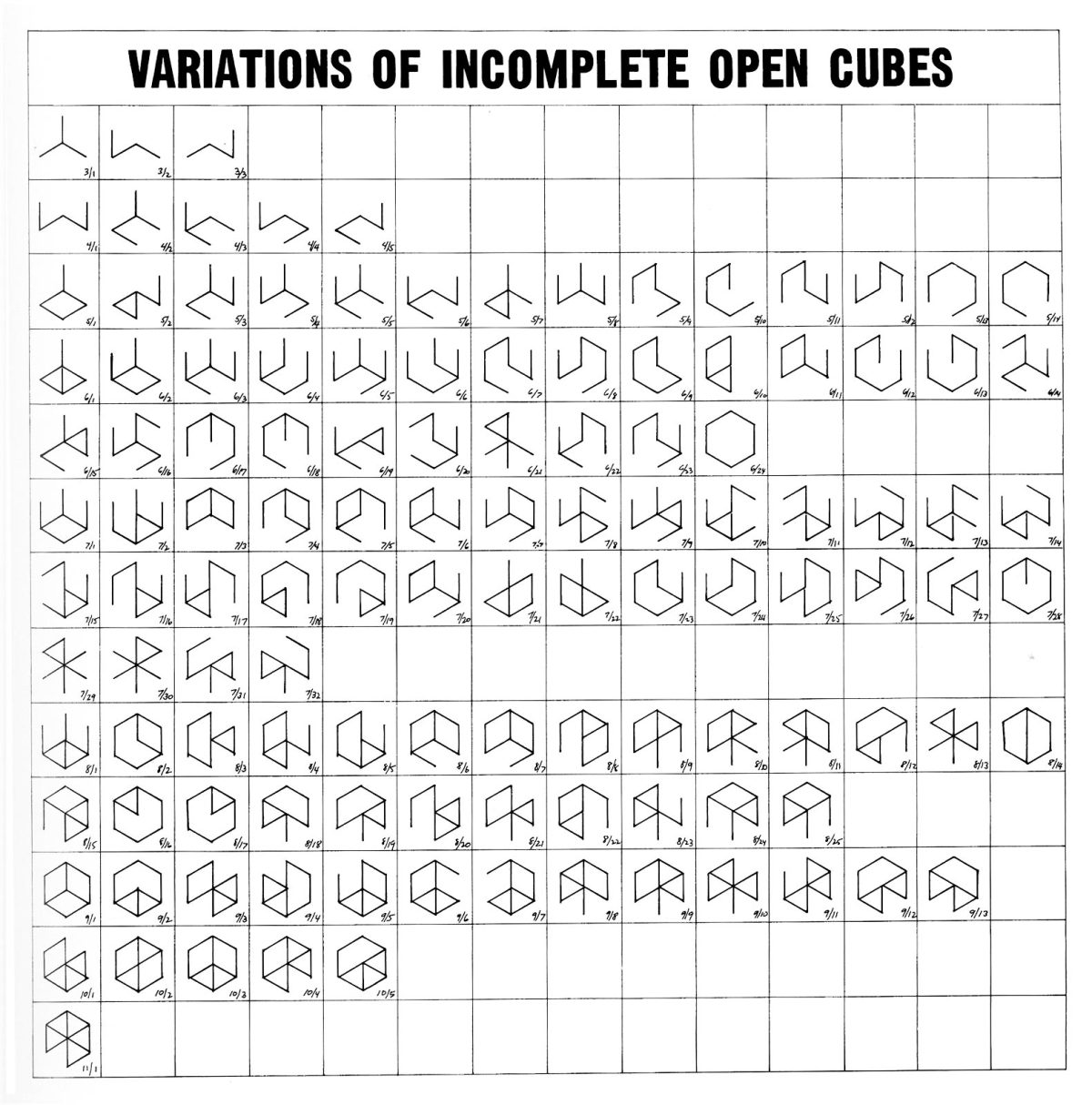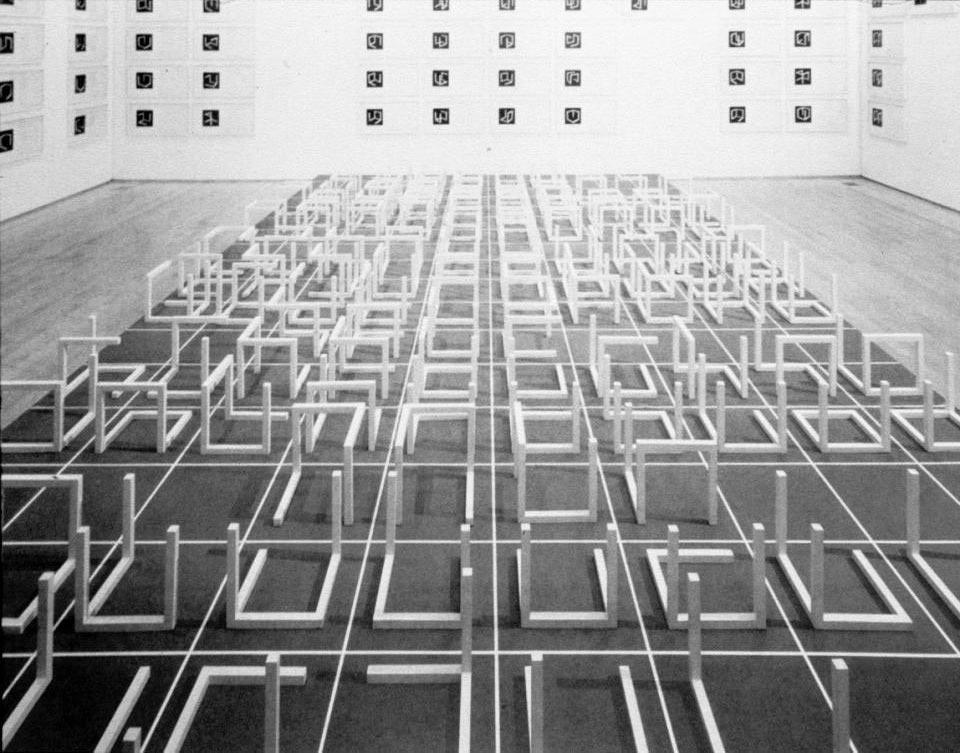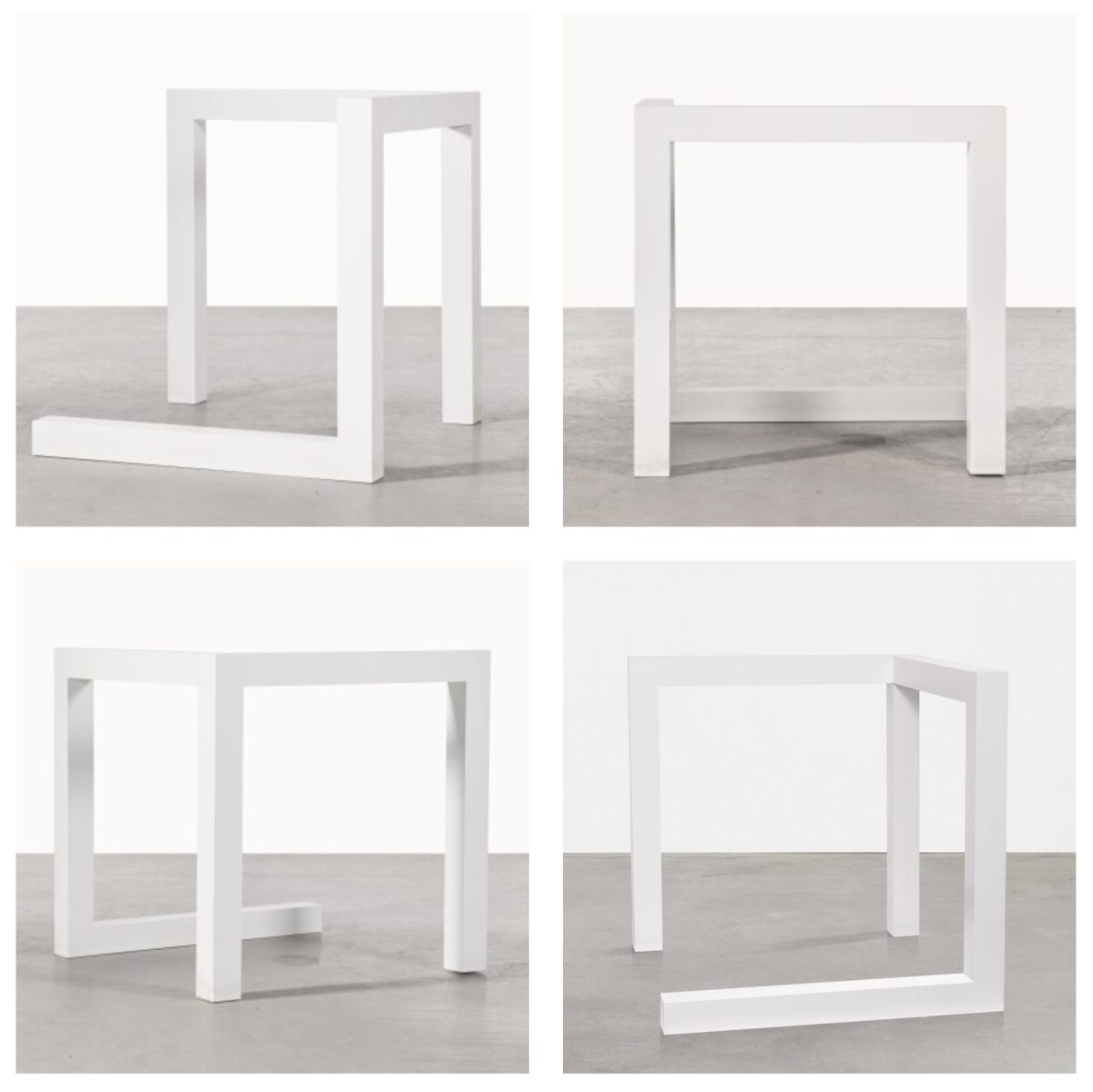“The idea becomes a machine that makes the art”
– Sol Lewitt, Paragraphs on Conceptual Art, 1967

In his Variations of Incomplete Cubes (1974), American artist Sol Lewitt (September 9, 1928 – April 8, 2007) looked at seriality and variation through a collection of 122 frame structures presented together with the corresponding diagrams arranged on a matrix.
LeWitt systematically explored the ways of “not making a cube, all the ways of the cube not being complete” – all 122 of them.
But what are we looking at in Lewitt’s conceptual work of art? “Conceptual artists”, he wrote at the start of his essay Sentences on Conceptual Art (1970), “are mystics rather than rationalists. They leap to conclusions that logic cannot reach.”
Granted, that might not help much. What he did was to make the uninteresting into something you want to look at and understand. What was important to artists like Sol LeWitt was the communication of the idea and not the execution.
As he put it:
“[The] most interesting characteristic of the cube is that it is relatively uninteresting. Compared to any other three-dimensional form, the cube lacks any aggressive force, implies no motion, and is least emotive… Because it is standard and universally recognized, no intention is required of the viewer. It is immediately understood that the cube represents the cube, a geometric figure that is incontestably itself.”

This is all at once beguilingly simple, elegant, rhythmic, mathematical and highly complex.
The cube is skinned to the bone and parts removed in such a way that it remains three-dimensional. Height, width, and depth are each represented in all of his variations. No cube can be rotated to match another. Each configuration is entirely unique. All of LeWitt’s cubes are contiguous (each part is connected to at least one other part). Like all good art, we get closer to the heart of things.

Four views of one cube – via Sotheby’s
In 2013, Sol LeWitt and Gary Garrels, a curator at San Francisco Museum of Modern Art, discussed LeWitt’s Incomplete Open Cubes.
LeWitt’s cubes were enamel on aluminium, 105 by 105 by 105 cm (41⅜ by 41⅜ by 41⅜ in).
In 2018, Rob Weychert pushed the mathematical boundaries of LewWitt’s project with Incomplete Open Cubes Revisited, expanding the number of incomplete cube possibilities to 4,094.
All of LeWitt’s cubes are contiguous; each part is connected to at least one other part. Since the cubes were intended to be physically fabricated, this appears to be a logistical concern: In the physical world, a detached part floating in space would be impossible. (It’s not clear, however, why detached, grounded parts were not permitted.)
You can read how Weychert did it here, complete with downloadable source code.
Would you like to support Flashbak?
Please consider making a donation to our site. We don't want to rely on ads to bring you the best of visual culture. You can also support us by signing up to our Mailing List. And you can also follow us on Facebook, Instagram and Twitter. For great art and culture delivered to your door, visit our shop.






